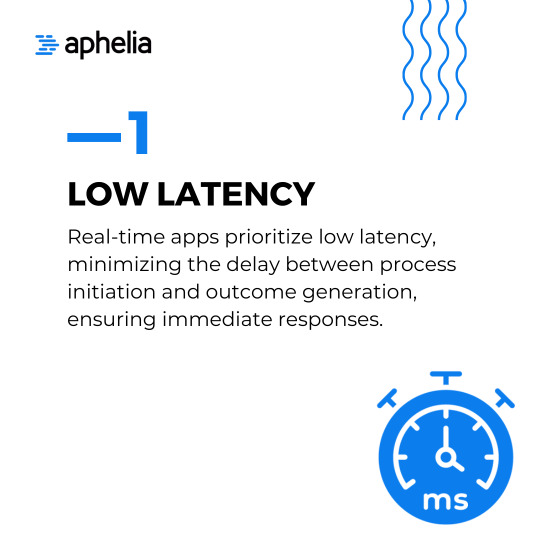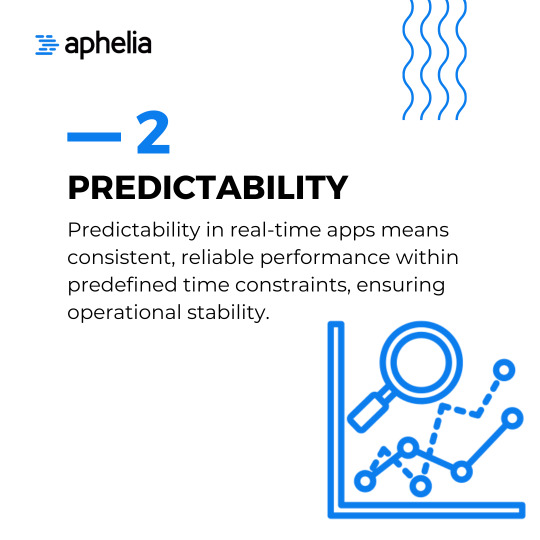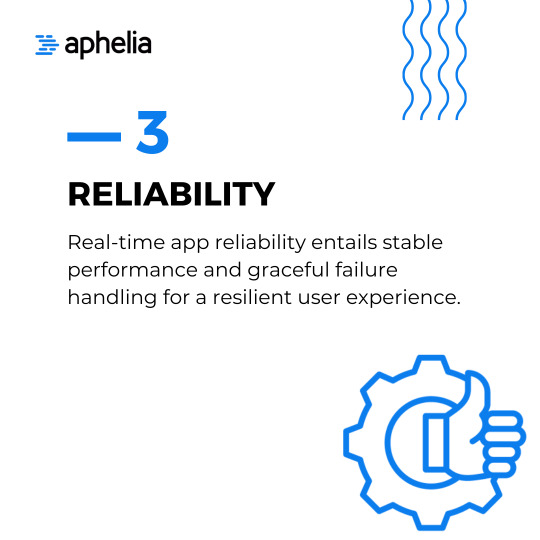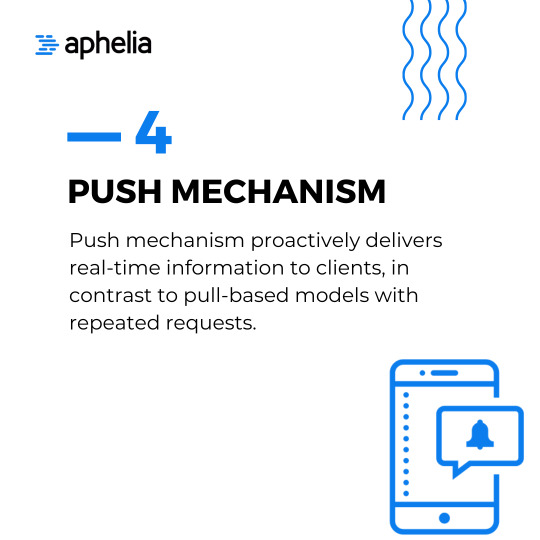#realtimeapp
Explore tagged Tumblr posts
Text
Real Time Application Development Services
Expert real time app development services for responsive, interactive solutions. Scalable, secure applications built to meet your unique business needs.
Read More: https://autotrophit.com/industry/real-time-application/
0 notes
Text
youtube
Node.JS Development Services in India | Boost Your Web Performance with Connect Infosoft
Connect Infosoft Technologies offers expert Node.js solutions to take your web applications to the next level. Let our team of experts help you build a robust, scalable, and efficient web solution using Node.js.
Contact us today to start your project!
#NodeJS#NodeJSDevelopment#WebDevelopment#ConnectInfosoft#BackendDevelopment#RealTimeApps#APIIntegration#WebPerformance#WebDevelopmentService#HireNodeJSDeveloper#CustomAPIIntegration#MobileApplicationDeveloper#FullStackDeveloper#WebDesigningCompany#MobileApplicationCompany#WebDevelopersTeam#ConnectInfosoftTechnologies#ShortVideo#WebDevelopmentCompany#Software#Trending#ViralVideo#Facebook#Reel#Youtube#Instagram#USA#UK#canada#India
2 notes
·
View notes
Text
Mastering Node.js for Product Development: Key Tips and Pitfalls

When developing a product using Node.js, following best practices is crucial for success. A recent blog post offers valuable insights into the key do's and don'ts every developer should know. Whether you’re just starting out or looking to refine your skills, this guide provides essential tips to optimize your Node.js projects.
Check out the blog for a detailed guide: [https://tinyurl.com/5d3794bx]
Fortunesoft is recognized for its expertise in Node.js development, helping businesses build robust and scalable applications.
Learn more about Fortunesoft's capabilities: [https://tinyurl.com/366yb3zm]
#NodeJS#NodeJSDevelopment#Australia#SydneyTech#WebDevelopment#MobileDevelopment#UIUXDesign#RealTimeApps#APIDevelopment#EcommerceSolutions#TechInnovation#WebAppDevelopment#DigitalTransformation#SoftwareDevelopment#TechServices#ProductDevelopment#NodeJSTips#DevCommunity
0 notes
Text
5 Steps to Rapidly Develop Real-Time Applications and Unlock New Possibilities

Introduction: What is Real-Time Application Development and its Benefits
In today’s fast-paced digital world, real-time applications have become increasingly important for businesses. Real-time application development involves creating software systems that can process and display data in real-time, enabling users to receive instant updates and interact with the application seamlessly. These applications have a wide range of applications, from financial trading platforms to collaborative workspaces and IoT (Internet of Things) devices. Real-time applications offer numerous benefits, including instant communication and collaboration, real-time analytics and insights, and enhanced customer engagement. In this blog post, we will explore five essential steps to rapidly develop real-time applications and unlock new possibilities.
Step 1: Understand the Business Requirements & Goals for Your Real-Time App
Before diving into the development process, it is crucial to have a clear understanding of the business requirements and goals for your real-time application. This step involves conducting thorough research and analysis to identify the specific objectives the app aims to achieve and the target audience it will serve. By understanding the business requirements, you can tailor the development process to meet the desired outcomes. Consider factors such as real-time data analysis, scalability, and performance requirements. This understanding will ensure that the application aligns with the business objectives and delivers the desired value to the users.
For example, in the case of a financial trading platform, real-time data updates can help traders make timely decisions, improving their chances of success. Similarly, in a collaborative workspace application, real-time updates enable team members to work together seamlessly, fostering productivity and efficiency. By understanding the business requirements, you can develop a real-time application that addresses specific pain points and provides a competitive advantage.
Step 2: Choose the Best Platform for Your Real-Time App
Selecting the right platform for your real-time application is a critical decision that will impact its performance and functionality. There are several options to consider, including mobile app platforms, web application development frameworks, and cloud platforms. Each platform has its own advantages and considerations.
Mobile app platforms provide a native and responsive user experience, enabling users to interact with the application on their smartphones or tablets. These platforms leverage device capabilities, such as push notifications and location services, to enhance the real-time experience. Popular mobile app platforms include iOS (using Swift or Objective-C) and Android (using Java or Kotlin).
Web application development frameworks offer cross-platform compatibility, allowing users to access the application from various devices through web browsers. These frameworks, such as React.js or Angular, provide a rich and interactive user interface. Web applications can be easily updated and deployed without requiring users to install updates on their devices.
Cloud platforms provide scalability, flexibility, and cost-efficiency. They enable easy deployment and management of real-time applications by handling the underlying infrastructure. Cloud platforms like AWS (Amazon Web Services), Microsoft Azure, or Google Cloud Platform offer various services and tools to support real-time applications.
Consider factors such as ease of development, scalability, integration capabilities, and target user devices when choosing the platform for your real-time application. Assess the specific needs of your application and select the platform that best suits those requirements.
Step 3: Design your User Experience & Interface to Enhance User Engagement
User experience (UX) and user interface (UI) design play a vital role in the success of any application. In the case of real-time applications, a well-designed UX/UI is crucial for enhancing user engagement and ensuring a seamless experience. Design an intuitive and user-friendly interface that allows users to easily interact with the real-time data and features of the application.
Consider the unique characteristics of real-time applications, such as the need for instant updates and real-time collaboration. Design a responsive and visually appealing interface that communicates information effectively. Use intuitive navigation and provide clear feedback to users when actions are performed in real-time. Implement real-time data visualizations, such as charts or dashboards, to enable users to understand and interpret the data in real-time.
Optimize the application’s performance by minimizing latency and providing responsive user interfaces. Slow loading times or delays in data updates can lead to user frustration. Leverage techniques such as lazy loading and caching to ensure smooth and seamless real-time interactions. Conduct user testing and gather feedback to refine the user experience and interface design. Iteratively improve the design based on user insights to create a user-centric real-time application.
Step 4: Implement The Right Technology Stack For Your Real-Time App
Choosing the right technology stack is essential for the successful development of your real-time application. Consider the programming languages, frameworks, and libraries that best align with your project requirements. Selecting the appropriate technology stack will ensure optimal performance, scalability, and maintainability.
JavaScript is a popular choice for real-time application development. With frameworks like React.js and Angular, developers can create highly interactive user interfaces. These frameworks offer efficient rendering and updating mechanisms, making them well-suited for real-time applications. Node.js, a JavaScript runtime, is another popular option for building real-time server applications, providing event-driven architecture and asynchronous I/O operations.
Python is known for its simplicity and versatility. It offers numerous libraries and frameworks, such as Django and Flask, which facilitate rapid development and real-time functionality. Python’s extensive ecosystem makes it suitable for data-intensive real-time applications.
Ruby, with its Rails framework, is renowned for its developer-friendly syntax and conventions. Ruby on Rails provides a robust foundation for building real-time web applications, offering features like Action Cable for real-time communication.
When selecting the technology stack, also consider real-time communication protocols. WebSockets, a bidirectional communication protocol, enables efficient real-time data exchange between the application and its users. MQTT (Message Queuing Telemetry Transport) is a lightweight protocol widely used for IoT applications, allowing devices to exchange real-time data over constrained networks.
Evaluate the strengths and weaknesses of different programming languages, frameworks, and protocols, and choose the stack that best fits your real-time application requirements. Consider factors such as development resources, community support, scalability, and ease of integration.
Step 5: Testing and Monitoring Your Real-Time Application To Ensure Performance & Stability
To ensure the performance and stability of your real-time application, thorough testing and monitoring are essential. Real-time applications often handle high volumes of data and simultaneous user interactions, making it crucial to validate their behavior under different scenarios.
Conduct comprehensive testing of the application to identify any potential issues or bottlenecks. Implement unit tests to verify the correctness of individual components and functionalities. Integration tests are important to ensure smooth communication and collaboration between different modules of the application. Load testing is particularly crucial for real-time applications to assess their performance under high user loads and real-time data streams.
Automated testing frameworks, such as Jest or Selenium, can streamline the testing process and ensure consistent results. Implement continuous integration and continuous deployment (CI/CD) pipelines to automate testing and deployment processes, enabling faster iterations and quicker feedback loops.
Additionally, set up monitoring tools to track the application’s health, identify any performance issues, and respond promptly to ensure a seamless user experience. Monitor key metrics such as response times, server health, and user experience to proactively detect and address performance issues.
Use application performance monitoring (APM) tools to gain insights into the application’s performance in real-time. Monitor the response times of different API endpoints, track resource utilization, and analyze user behavior patterns to optimize the application’s performance.
Conclusion:
Rapidly developing real-time applications can unlock new possibilities and revolutionize the way businesses interact with their users. By understanding the business requirements, choosing the right platform, designing a compelling user experience, implementing the appropriate technology stack, and thoroughly testing and monitoring the application, you can ensure the successful development and deployment of your real-time application.
Embrace the power of real-time technology and leverage its capabilities to create innovative and engaging applications that meet the evolving needs of today’s digital landscape. By following these five steps — understanding the business requirements, choosing the right platform, designing a user-centric interface, implementing the appropriate technology stack, and testing and monitoring the application — you can confidently embark on your journey to develop real-time applications and stay ahead in the competitive digital market. Real-time applications have the potential to transform industries, empower users, and unlock new opportunities for businesses. Embrace the real-time revolution and create applications that make a real-time impact.
0 notes
Text






Real-time apps share common traits, including low latency, immediate response, predictable performance, reliability, and a push mechanism for timely information delivery, ensuring swift and consistent user experiences critical in time-sensitive applications across various domains.
#realtimeapps#appdevelopment#outsourcedevelopers
0 notes
Photo

Node.js is an ideal model😊 for developing a real-time application📲 which is able to stream data real-time. If you want to get ready a real-time app on Node js then visit🧐: https://www.w3care.com/nodejs-development-services/
0 notes
Photo

Want to react for your user actions by analyzing the stream data in real-time. Create your extremely scalable real-time web apps with us. Get in Touch With Us: http://bit.ly/2jXxrar #Infinijith#Infinijith #MobileApps #RealTimeApps
0 notes
Text
Show HN: RealtimeApp – Deploy a realtime app using serverless components
https://github.com/serverless-components/RealtimeApp Comments
0 notes